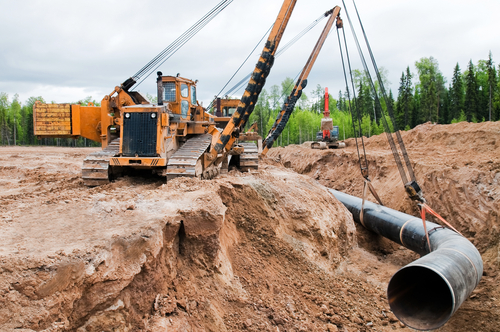National Grid forges three-year deal with Urbint for AI help to counter gas line damage

A three-year deal struck between Urbint and National Grid is the latest move bringing artificial intelligence more intrinsically into the gas market, as a means of protection and threat prediction.
Urbint is a company devoted to training AI to anticipate future risks and improve safety for gas lines. In the case of National Grid, for which its National Grid Partners acts as a venture investment and innovation arm, the goal is to invest in and tap into this power to reduce third-party excavation damage to those lines.
The deal comes mere weeks after Urbint completed an acquisition of Opvantek, a provider of utility software applications that assessed risk for more than 25 percent of natural gas distribution pipelines in the United States. The acquisition has left Urbint now servicing a solid majority of the North American natural gas utility industry.
“Urbint is solving some of the biggest infrastructure risks facing utilities by closing the gap between the enormous potential of AI and its effectiveness in the field,” Corey Capasso, CEO and founder of Urbint, said in an interview with Daily Energy Insider. “We do this by having a quantifiable impact on utilities with decision-making software that helps balance safety, reliability, and affordability. Today, many field decisions are still made with gut instinct and intuition, which is neither systematic nor optimized for risk. When utilities work with Urbint, they have impactful results in less than 90 days, measured by KPIs already adopted by utilities and regulators to measure their respective operational programs.”
Urbint, Capasso adds, works to further the industry through consideration of metrics previously unaccounted for. With funding from National Grid Partners, Urbint intends to accelerate development of its AI-based enterprise risk platform still further.
“Urbint’s speed to value, along with its ability to incorporate predictive intelligence into existing workflows, enables utilities to make better risk-driven decisions on decisions they’re already making,” Capasso said. “We help solve many different operational challenges in a time where the operating environment for utilities is growing in complexity. Utilities need long-term partners that can help them navigate the changing world, and Urbint is one of them.”
The AI models at Urbint’s disposal provide insights into a variety of external factors that affect risks for distribution pipelines, such as temperature, excavation threats, acidic soil or poor drainage. Through machine learning powered by Urbint’s Model of the World system, those models incorporate infrastructure threats, as well as situational and environmental threats.
The system allows models to be built with thousands of considerations – far more context than human operators can balance and assess. What’s more, these considerations are factored in combination, allowing risks to be weighed and pinpointed, while keeping costs low.
Compare this to the traditional method where people would analyze historical trends, usually from internal data, make decisions, and then verify the results to hunt for improvement. According to Capasso, by shifting to AI, it moves things from reactive to proactive, allowing predictions of even unusual cases. Whereas the focus of the past was on concerns like pipe diameter or the nature of a city district, Urbint can examine all the way down to how simple of a repair job a leak might be. It can assess different outcome paths, each with their own impact calculations like operational costs or emissions, and uniformly assess different kinds of risks on the same terms, no matter how dissimilar.
“Utilities have to manage assets that are in the real world, which means risks can change daily,” Capasso said. “Urbint’s models continuously train on new data, which allows them to stay dynamic. In the past, with traditional statistical modeling, analysis was updated maybe once a year. With AI, models dynamically adapt to new and changing threats, which is a huge advantage in responding to real-world scenarios.”
“Our investment in Urbint supports our shared vision of the power of AI to make the gas industry safer,” Lisa Lambert, founder and president of National Grid Partners, said. “We look forward to working with Urbint more closely to further demonstrate the value new technology can bring to gas providers making risk-driven decisions.”
The money put forward by National Grid Partners will fuel research and development, but it also brings new technology to a massive service territory. What’s more, it opens the potential for Urbint’s models to go beyond American shores. Already, Urbint has spoken of international expansion. It’s already partnering with nine of the top 10 largest gas utilities in the country.
But Capasso spoke highly of how the move will reflect on National Grid – one of the largest investor-owned utility companies in the world – and its effects on the future, as well.
“National Grid’s partnership with Urbint has further proven their commitment to safety and innovation as part of their culture,” Capasso said. “By investing in cutting-edge technology and operationalizing it across their entire U.S. service territory covering 20 million customers, they are one of the industry’s leading utilities supporting the transformational impact AI will have in reducing gas infrastructure risk.”
Beyond National Grid, Urbint’s current partners include Southern Company, Con Edison, Exelon, Dominion, NiSource and Xcel Energy, among others.
